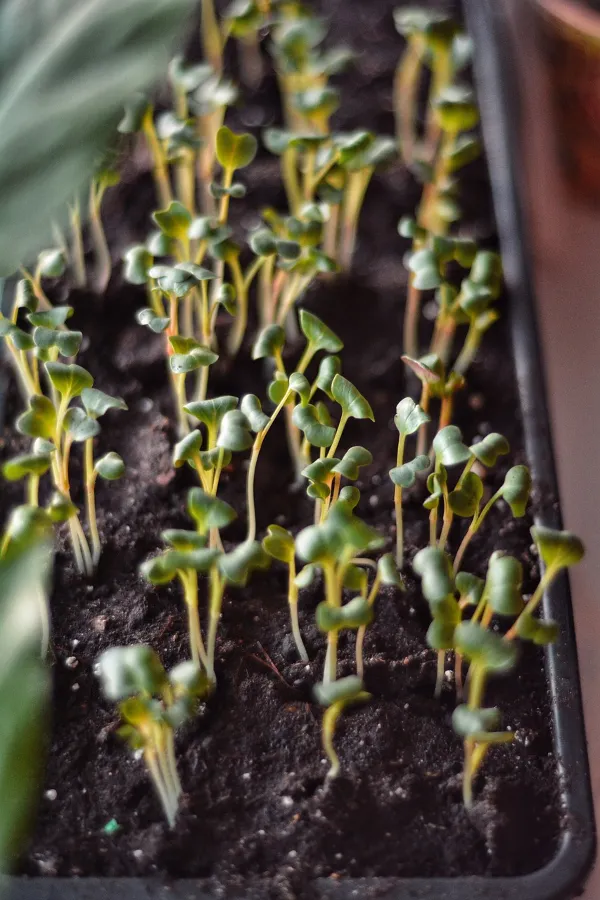The potent power of microgreens
Big on nutrition and flavour, microgreens are the micro version of a plant. They are rich in antioxidants, fibre, and enzymes, and they help build immunity.
Microgreens have gained increasing popularity in recent years because of their high nutritional value. As most food needs to be looked at from the connection between calories and nutrients, microgreens are some of the most nutrient-dense foods. They contain all the power of a mother plant in them as they are seedlings. Think of them as the young version of the plant. Research shows that microgreens have high levels of chlorophyll - the green pigment in plants that is associated with blood purification and better circulation.
Are microgreens the same as sprouts?
I’ve been asked this question many times. Sprouts and microgreens are both wonderful plant foods, but they do have some difference. Sprouts are germinated in water. You can easily make them by soaking lentils overnight, discarding the water, and then leaving them out to germinate for two to three days.
Microgreens, on the other hand, are grown in soil. The soil provides them with their nutrients and even though they take longer, they are rich in nutrients. Sprouts are crunchy and add some bulk to a meal, but microgreens are more delicate and have a strong punch of flavour! There is some concern that sprouts may have a higher risk of bacterial contamination since they are grown in a less airy space. Microgreens are considered a safer option if you struggle with infections.
Some research has also found that microgreens contain 40 times higher levels of nutrients as compared to the mother plant, which makes them a star ingredient! Think of them as tiny edible plants!

Benefits of microgreens
As I mentioned earlier, microgreens are nutrient-dense plant food. They can be great additions to a plant-based diet. Some of the benefits include:
- Rich in antioxidants and phytonutrients. It’s not just chlorophyll that microgreens contain. They also contain phytonutrients like vitamin C, carotenoids, B vitamins, and antioxidants that are potent in supporting the immune system. During these challenging times, we must find a balance between understanding that the immune system can be supported and trying to add all sorts of immune-boosting foods, which can have the opposite effect when consumed in large quantities.
- Brassica microgreens, which are from the cruciferous family, contain sulforaphane that supports liver detoxification, estrogen metabolism, and hormone balance. Estrogen is a hormone that needs to be used and then shunted out of the body. If your detoxification pathways are challenged, then you will find that estrogen metabolites get reabsorbed making you estrogen dominant and fueling conditions like PCOS and fibroids. If you struggle with heavy hips, that is a sign of estrogen dominance.
- Many microgreens have been researched for their positive effect on inhibiting the growth of cancer cells.
- They contain chlorophyll, which is the building block of plants, helping to convert light into energy for plants. In humans, chlorophyll-rich plants have been associated with binding to toxins and helping them to leave the body, thereby improving detoxification pathways and all health.
- Microgreens are rich in fibre. Fibre is something that is a game-changer. All health can be supported when detoxification improves. Fibre helps your body to use it as a gentle brush through your gastrointestinal tract.
- Food that can be eaten fresh without cooking is rich in enzymes. Live food like microgreens are rich in enzymes and help you with digestion overall.
- They are alkaline foods. Your body needs a balance between acidic foods and alkaline foods. When you eat some acidic food, your body needs alkaline foods like microgreens to balance the pH within your body.
How can you include microgreens into your diet?
One of the things to remember is that microgreens can have a strong and pungent flavor. But they are also rich in color. Add them in different ways into your diet in several ways:
- Sprinkle a handful of fresh microgreens into your salad. Combine them with different flavors to balance out their strong ones.
- Combine them with a fresh apple and blend them into juice for a great antioxidant boost! Always ensure that you do not discard the fibre and that you drink your juice fresh. This is why I do not advice cold-pressed juices, which are devoid of fibre and can be oxidized on shelves.
- One of my most favourite ways of using microgreens is in a sandwich. I use a gluten-free bread made of amaranth or millet as a base. Toast your bread and use a plant-based dairy-free spread made with soaked cashew, fresh oregano or coriander, garlic, lemon juice, olive oil, salt, and nutritional yeast. Pile it with some grilled fish or mashed kidney beans. Add some sliced carrots and tomatoes. Finally, top them with fresh microgreens and enjoy a sumptuous dairy-free anti-inflammatory meal loaded with the goodness of everything that your body needs to thrive!
If you have not added microgreens into your diet, this might be the time to do that. Even if you cannot source them right now, you could try your hand at growing them yourself! If not, keep them in mind, and put a note for yourself to include them in the first opportunity that you get!
Edited by Megha Reddy
(Disclaimer: The views and opinions expressed in this article are those of the author and do not necessarily reflect the views of YourStory.)







